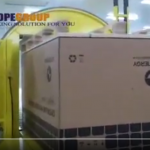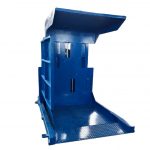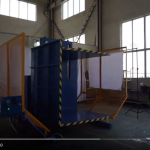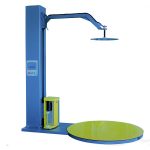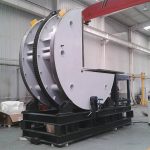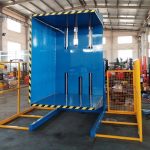How Pallet Inverters Increase Warehouse Productivity and Safety
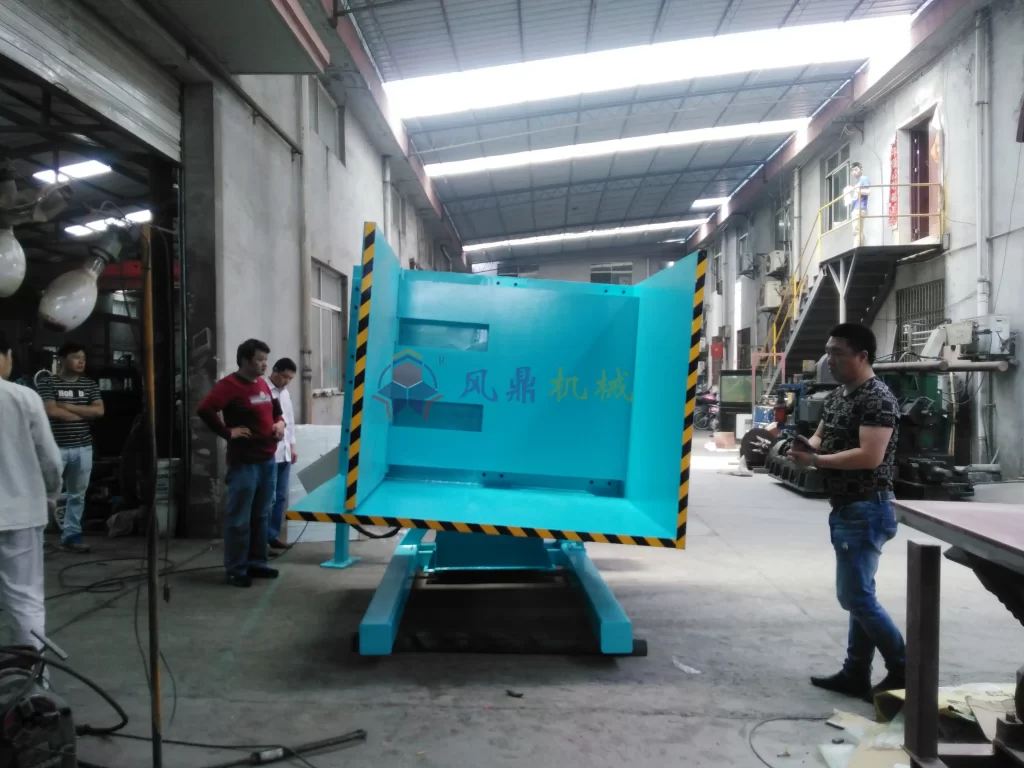
In the warehousing industry, productivity and safety are paramount. Operations need to be efficient, while the well-being of workers and the integrity of goods must be maintained. One tool that has become essential in this regard is the pallet inverter. This innovative equipment not only optimizes workflows but also significantly reduces the risks associated with manual pallet handling. In this article, we will explore how pallet inverters are enhancing warehouse productivity and safety, making them a vital addition to any modern logistics operation.
1. What Are Pallet Inverters and How Do They Work?
A pallet inverter is a specialized machine designed to rotate or flip a loaded pallet to access the underside or to exchange damaged or misaligned pallets without unloading the goods. These machines can rotate pallets 180 degrees, making it easier to swap pallets or reposition loads.
The operation of pallet inverters is straightforward. A pallet, loaded with goods, is placed into the inverter, which securely clamps the load. The machine then rotates the entire stack, allowing for pallet exchange, damage inspection, or load reorientation. Once the task is completed, the inverter returns the pallet to its original position, and the load is ready for further handling.
By automating this traditionally manual process, pallet inverters help reduce the time and effort involved, improving overall warehouse productivity.
2. Boosting Productivity with Pallet Inverters
One of the key reasons pallet inverters have become indispensable in modern warehouses is their productivity-enhancing capabilities. Here are some ways they contribute to increased efficiency:
a. Faster Pallet Exchange:
Manually switching out pallets or repositioning loads is time-consuming and labor-intensive. With a pallet inverter, this process is completed in a matter of seconds, allowing workers to focus on other tasks. By reducing manual handling time, pallet inverters enable faster turnover and improved throughput.
b. Minimizing Load Damage:
When goods need to be transferred from one pallet to another, there’s always a risk of damage due to mishandling. Pallet inverters offer a controlled and secure method for this transfer, ensuring that products remain intact. Fewer damaged goods mean fewer losses and better productivity.
c. Handling Heavy or Bulky Loads with Ease:
Large, heavy, or bulky loads are challenging to handle manually, leading to slower operations and the need for additional manpower. Pallet inverters make it easy to rotate and transfer such loads efficiently, thus streamlining warehouse workflows.
d. Reducing Downtime:
Pallet inverters can significantly reduce downtime caused by damaged pallets or the need to inspect goods. By quickly flipping the pallet to access the load, warehouse operators can perform necessary checks or replacements without interrupting the workflow.
3. Enhancing Safety in the Warehouse Environment
Beyond boosting productivity, pallet inverters play a crucial role in improving safety. Warehouse environments can be hazardous, with injuries often resulting from manual handling, lifting, or accidents related to improper load management. Pallet inverters mitigate many of these risks in the following ways:
a. Reducing Manual Handling Injuries:
One of the most common causes of injury in warehouses is improper manual lifting. Pallet inverters eliminate the need for workers to manually rotate or lift heavy loads, which significantly reduces the risk of strains, sprains, and other musculoskeletal injuries.
b. Preventing Load Shifting and Spills:
When manually swapping pallets or reorienting loads, there’s always a risk that the load could shift, fall, or spill, potentially causing harm to workers or damaging products. Pallet inverters provide a secure method of load management, ensuring that products stay in place during the rotation process.
c. Improving Pallet Quality Control:
Over time, pallets can become damaged, posing a risk to both products and workers. Pallet inverters allow for easy inspection and replacement of damaged pallets, reducing the chances of accidents caused by faulty equipment.
d. Enhancing Ergonomics:
The ergonomic design of pallet inverters reduces the physical strain on workers, contributing to a healthier, safer work environment. With less manual labor involved, workers are less likely to experience fatigue or injuries, which can lead to fewer workplace accidents.
4. Key Features of Pallet Inverters that Drive Warehouse Efficiency
When choosing a pallet inverter, it’s important to consider the features that can drive efficiency in your warehouse operations. Some key features that enhance both productivity and safety include:
a. Versatile Clamp Systems:
Pallet inverters come with a variety of clamp systems that can accommodate different types of loads and pallet sizes. This versatility ensures that the equipment can handle various tasks, from pallet swapping to load rotation, without the need for manual intervention.
b. Easy-to-Use Controls:
Modern pallet inverters are equipped with user-friendly control panels that allow operators to easily manage the rotation process. This not only increases operational speed but also reduces the risk of user error, which could lead to accidents.
c. Heavy-Duty Construction:
Built to withstand heavy loads and harsh working conditions, pallet inverters are made from durable materials that ensure long-term performance and minimal maintenance. This reliability reduces downtime and enhances the overall productivity of warehouse operations.
d. Customizable Design:
Many pallet inverters offer customizable options to suit specific warehouse needs, such as varying rotation angles, adjustable clamp pressures, and load capacity adjustments. These features ensure that the pallet inverter can be tailored to the exact requirements of the warehouse, further optimizing efficiency.
5. Applications of Pallet Inverters in Different Industries
Pallet inverters are not limited to a single industry. They are used across various sectors to improve warehouse efficiency and safety. Some common applications include:
a. Food and Beverage Industry:
In food and beverage warehouses, pallet inverters are used to quickly switch out damaged or unsanitary pallets, ensuring that goods remain safe for consumption. They also facilitate faster load transfers, allowing for more efficient storage and shipment of perishable goods.
b. Pharmaceutical Industry:
The pharmaceutical sector often requires strict control over product handling and pallet hygiene. Pallet inverters help meet these standards by allowing for easy pallet exchange and minimizing the risk of product contamination.
c. Retail and E-commerce:
In fast-paced retail and e-commerce environments, pallet inverters help speed up the unloading and reloading of goods, reducing wait times and ensuring that products are quickly moved through the supply chain.
d. Manufacturing:
Manufacturers benefit from pallet inverters by reducing product damage during load transfers and speeding up processes on the factory floor. This helps increase output while maintaining the quality of goods.
6. Choosing the Right Pallet Inverter for Your Warehouse
With so many options on the market, selecting the right pallet inverter can seem overwhelming. However, by considering key factors such as load capacity, rotation speed, and clamp versatility, you can find the perfect machine to suit your warehouse’s needs.
a. Assess Your Load Requirements:
Different pallet inverters are designed to handle different load sizes and weights. Make sure the model you choose can accommodate your typical load requirements to ensure smooth operations.
b. Consider Automation Features:
Some pallet inverters come with automation capabilities, which can further enhance productivity by reducing the need for manual intervention. If you’re looking for a high level of efficiency, an automated pallet inverter could be the ideal solution.
c. Check for Safety Features:
Safety should always be a top priority. Look for pallet inverters with safety mechanisms such as load stabilization features, emergency stop buttons, and user-friendly controls to minimize the risk of accidents.
d. Evaluate Durability and Maintenance Needs:
A robust pallet inverter made from high-quality materials will offer long-term reliability and minimal maintenance. This ensures that your warehouse can continue operating smoothly without frequent downtime for repairs.
Conclusion
In today’s fast-paced warehousing environment, businesses must invest in tools that enhance productivity and ensure the safety of their workforce. Pallet inverters are a powerful solution that addresses both these needs by streamlining load management processes, reducing manual labor, and minimizing the risks associated with pallet handling. By incorporating pallet inverters into your warehouse operations, you can improve workflow efficiency, protect your employees, and ultimately, boost your bottom line.
Pallet inverters are not just a convenience—they are a crucial component of a modern, safe, and productive warehouse. Whether you operate in the food industry, pharmaceuticals, retail, or manufacturing, pallet inverters can transform your operations, leading to smoother processes and a safer work environment.

Get Your Best Solution !

